What is it like to dive with whale sharks in Western Australia?
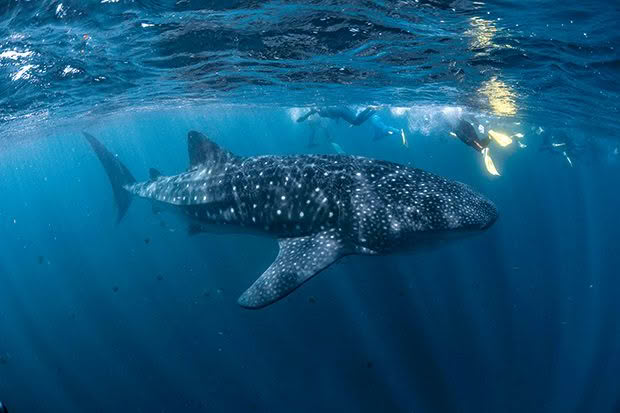
A close encounter with the behemoths of Ningaloo Reef is a once-in-a-lifetime experience for NZ Life & Leisure’s art director.
Words: Yolanta Woldendorp Photos: Brooke Pyke
Where: Cape Range National Park, Exmouth, Western Australia.
How to get there: Fly Air New Zealand to Perth, then north to Exmouth with Qantas Airlines. It is a two- to three-day drive from Perth or two days from Broome.
Best time to go: During the whale shark season from mid-March to the end of August.
Price: Ningaloo Whale Shark ‘n Dive charters are about $500 (AUD$445) for a full day, which includes lunch, drinks and gear.
A pilot’s voice spills from the boat’s radio: “Whale shark spotted, southwest of your location.” Our boat meanders along a section of the 260-kilometre Ningaloo Reef off the remote coast of Cape Range National Park, near Exmouth in Western Australia. It is one of the most extensive fringing coral reefs in the world.
“Okay, guys, get ready,” yells Bonnie, one of the diving staff. My sister Eva and I are in one of two groups aboard the Ningaloo Whale Shark n Dive charter. Anticipation builds as we test our gear in the shallow inner-reef waters and then get briefed on how to “interact” with the world’s largest fish species.
Our time has finally come. With a signal from Bonnie, our group shimmies into the dark-blue water like bobbing seals, the adrenalin pumping as we flipper wildly towards our guide’s waving hand. “Heads down, it’s coming our way,” she bellows. Submerging my head into the cool water, I notice a huge gaping mouth followed by a massive, speckled body.
It’s heading towards me.
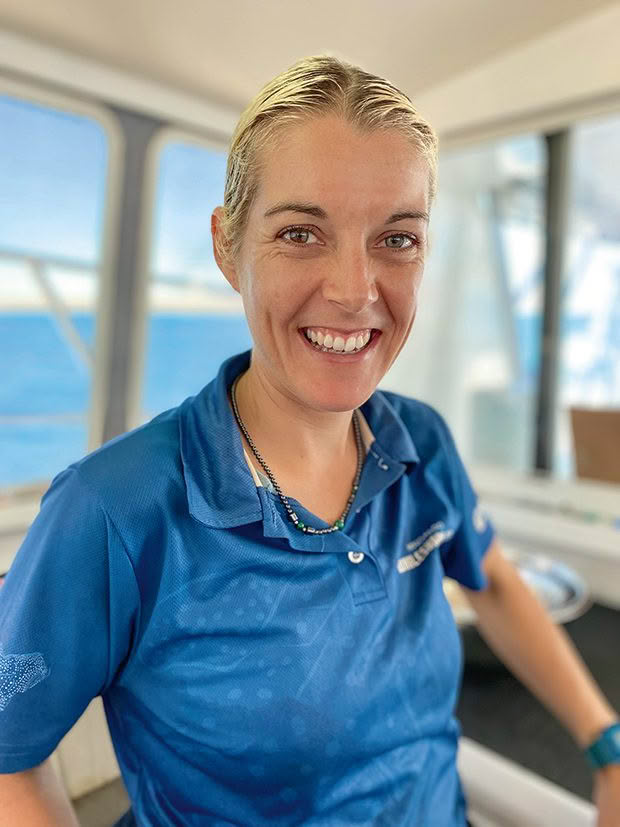
Dive spotter Bonnie Tregenza on board the spacious vessel Heron Charters.
Whale sharks are not whales at all, but sharks. Even with the air flowing from my snorkel tube and knowing full well the creatures only feed on plankton, I’m left breathless as the beast slowly glides past our group. I can’t help but feel he is chuckling at us, knowing we are mere specks at the end of his colossal 10-metre-long torso. I follow him, kicking vigorously around the back of his tail and popping around to the other side. Within a few minutes, he’s gone.
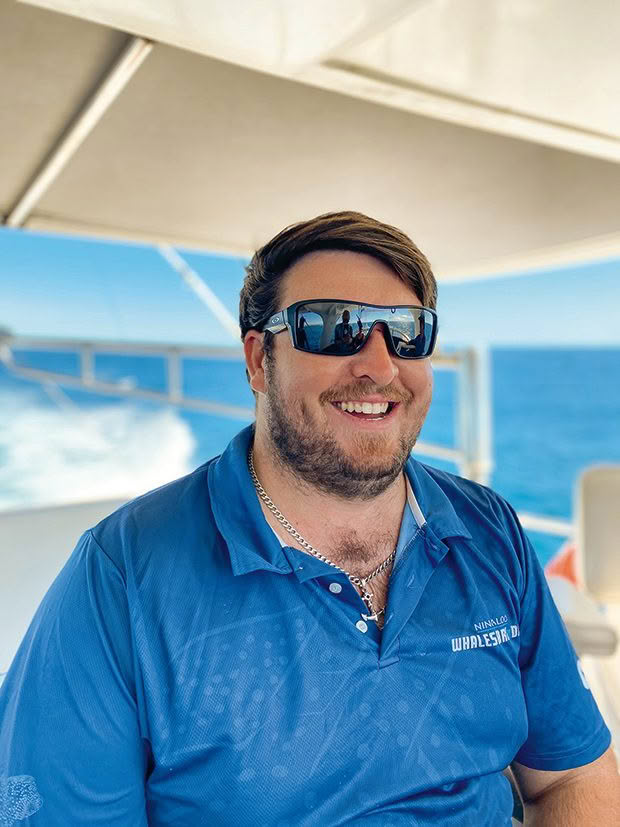
Captain Brandon Gray on board the spacious vessel Heron Charters.
The boat zips around to pick us up, and the process repeats for the next group. We see two more whale sharks later that day, and our efforts are fueled by a gourmet lunch of salads, meats and the giant prawns for which Exmouth is famous.
Every year in about March, a massive coral spawning attracts whale sharks to this region. The giants are generally solo swimmers, so there are plenty of opportunities to get in the water with one (though sightings can never be guaranteed). The whale sharks we see are juveniles ranging from six to 12 metres in length. Adults can grow to up to 20 metres and live to 130 years.
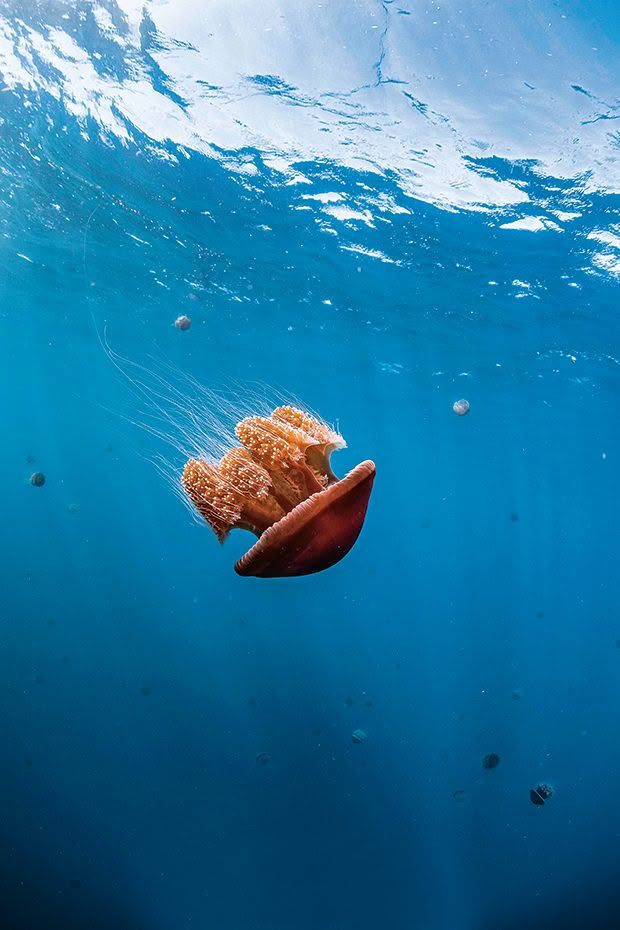
Whale shark sightings in Ningaloo are reliable and responsibly run by a small group of licensed professionals to ensure a sustainable and eco-friendly experience. Procedures and guidelines are managed by Australia’s Department of Biodiversity, Conservation & Attractions to ensure that tours have minimal impact on the colossal sea creatures. This includes governing how close vessels and swimmers get to whale sharks, how many swimmers can be in the water at any one time and ensuring that swimmers don’t interfere with the whale shark’s natural behaviour.
It means that diving below the surface or getting within three metres is a no-no. Such behaviour can scare a whale shark and prompt it to protect its delicate underbelly. In defence, it will dive deep to flee from more interaction. There’s a reason why these creatures have lasted at least 28 million years in the ocean — their instincts are sound, and their outer skin is rough, tough and 30 centimetres thick.
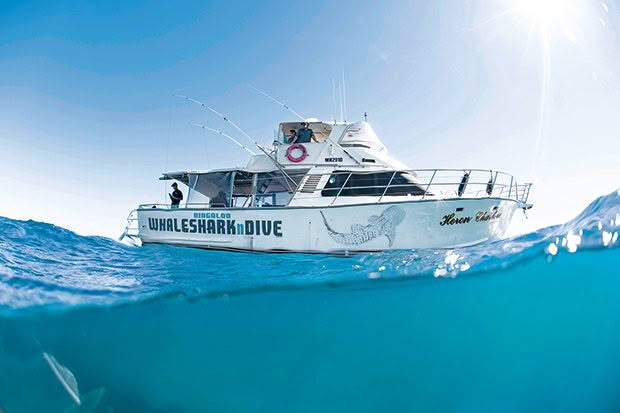
A percentage of each ticket goes towards whale shark research and conservation.
There are more than 7500 individual whale sharks in the global monitoring database, including at least 1300 from Australia alone. Every whale shark is identifiable based on a unique spotted pattern.
Ningaloo has one of the highest interaction rates in the world, with interactions up 96 per cent from the past season. This is likely because it is one of the few places where these harmless giants reliably congregate each year.
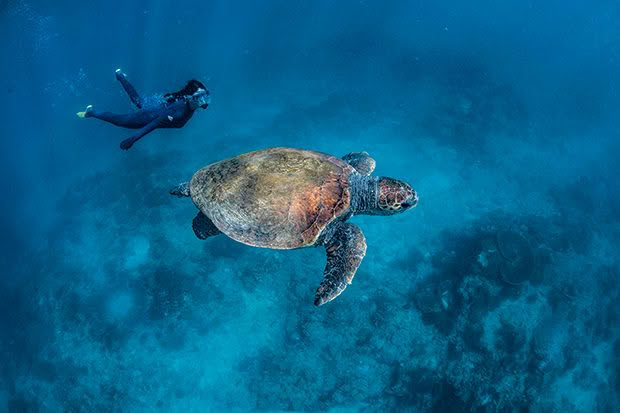
Our group ranged from teenagers to a 75-year-old, and floating devices are offered for the less confident swimmer. I found it easy getting into position and swimming with the sharks — it was far more challenging to propel myself back onto the boat. The so-called “mermaid manoeuvre”, a swift kick and lift onto the rear platform, had most of us in hysterics. We looked more like beached sea lions — fins splayed in the air — than graceful mermaids.
Something about being humbled by the world’s largest nonmammal is addictive; I would have hopped on the boat the next day if time permitted. Even as the whale sharks swam into the distance, we still had some more surprises, such as snorkeling with giant turtles, spotting reef sharks and enjoying a colourful array of tropical fish in the inner reef before our return to shore.
Love this story? Subscribe now!
 This article first appeared in NZ Life & Leisure Magazine.
This article first appeared in NZ Life & Leisure Magazine.
